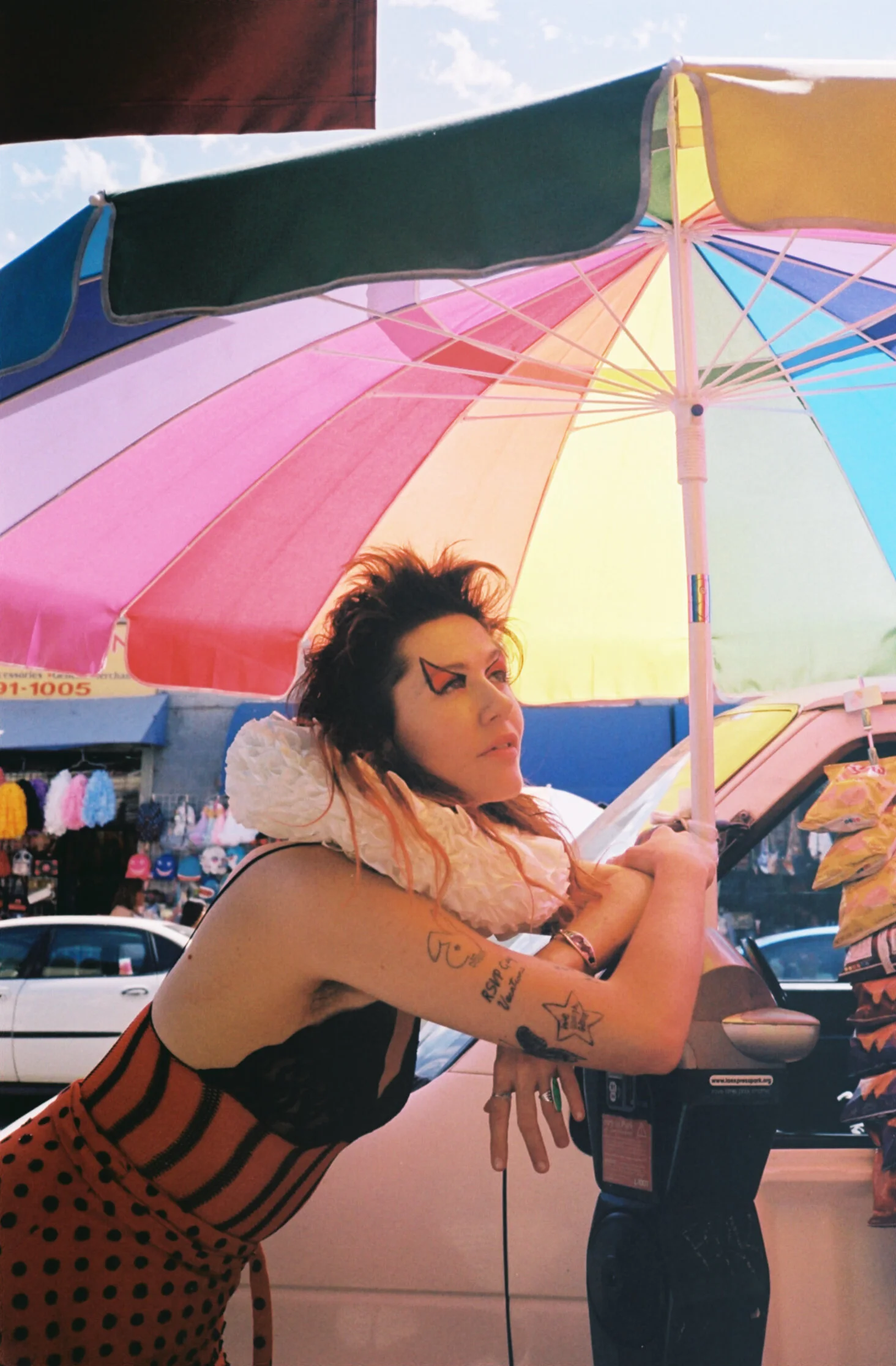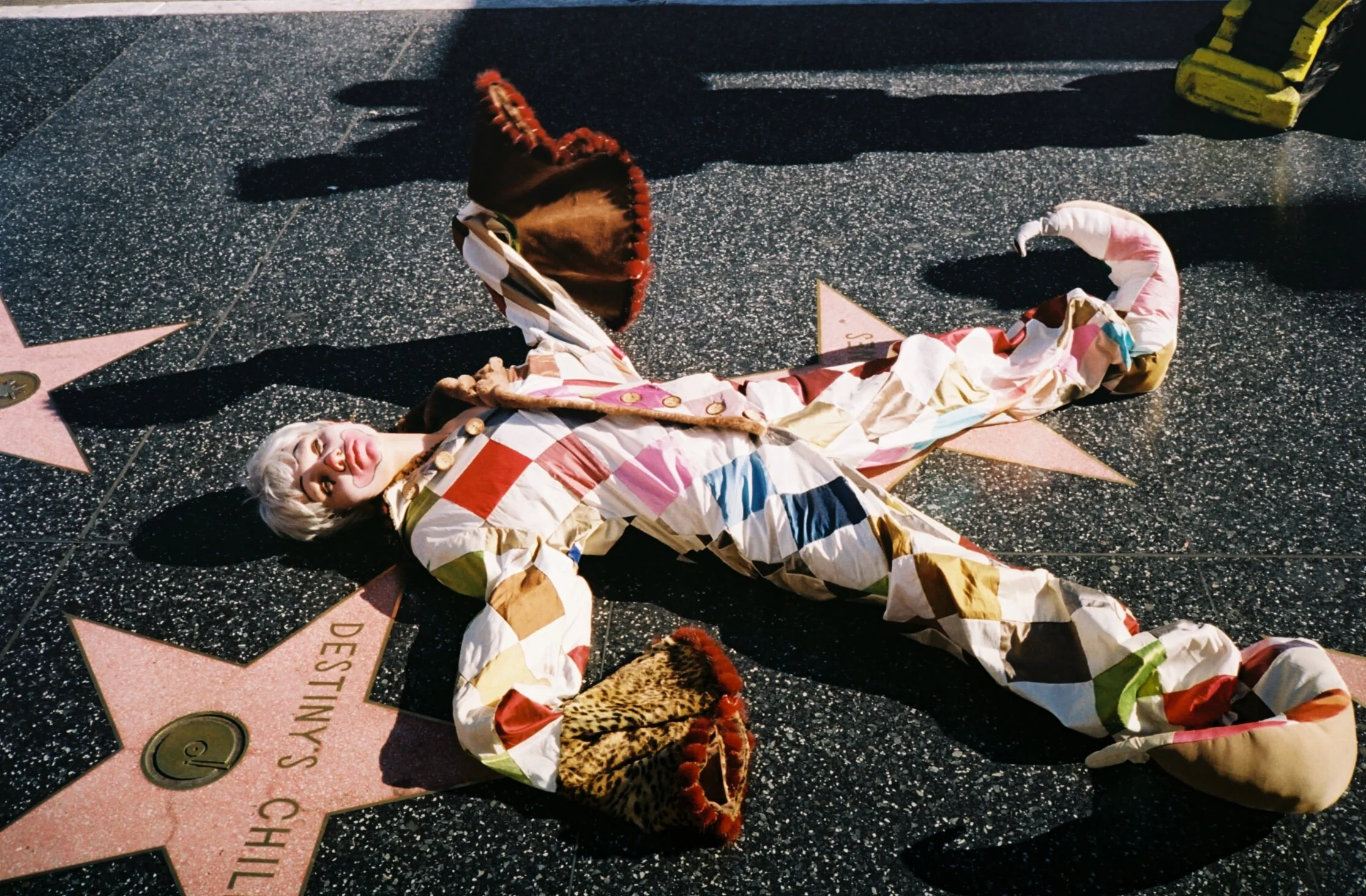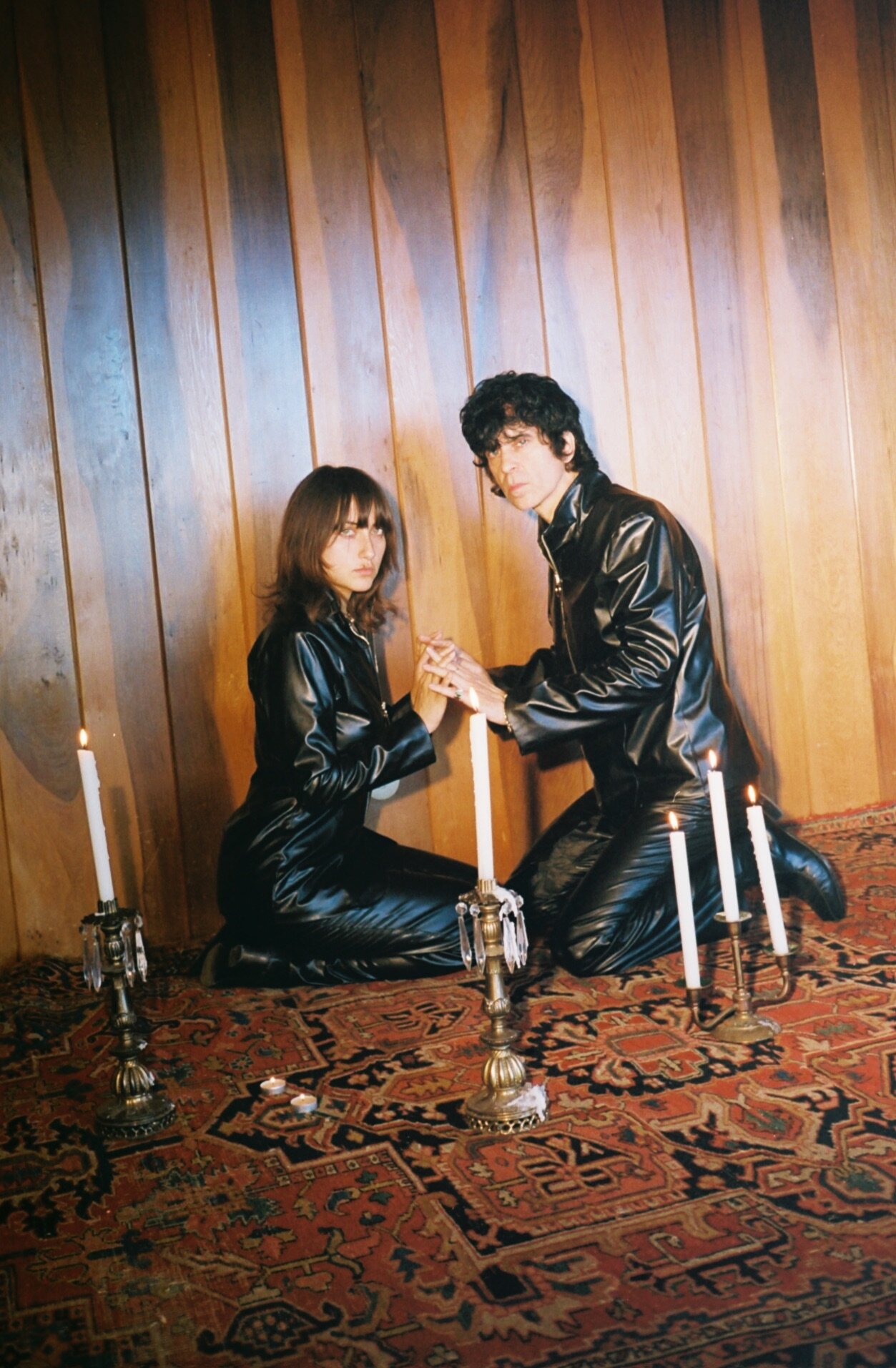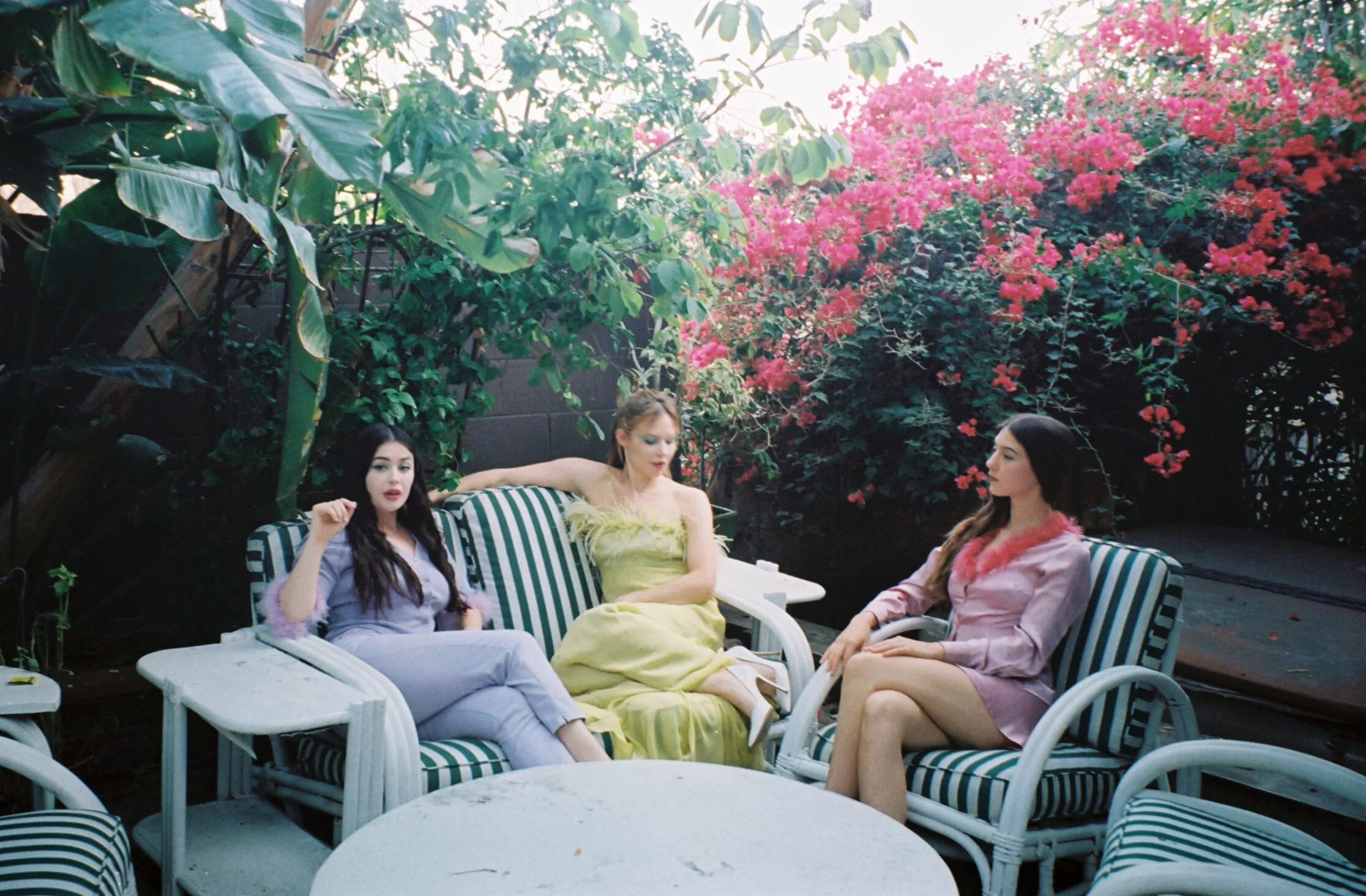Miriam Marlene Waldner Seamlessly Merges Her Photography with Music, Fashion, and the Fantastic
Miriam Marlene Waldner is a name increasingly recognized both for her dreamlike and acclaimed fashion photography as well as her striking music-related imagery. Earlier this autumn, The British Fashion Council included Miriam on their “2019 NEW WAVE: Creatives” list, which it describes as “100 of the most innovative and inspiring young creative talents from around the world.” The aforementioned Council notes that Miriam “brings her own take on weirdness and fantasy,” and we wholeheartedly agree with the apt description.
Anyone familiar with Weirdo Music Forever is certainly aware of a host of past collaborations and path-crossings between Miriam and WMF, thanks to shared interactions with several established and emerging artists, including: Ariel Pink, The Garden, John Maus, Zumi Rosow, Cowgirl Clue, and many others. WMF has featured Miriam’s remarkable photography in exclusive interviews with Don Bolles, Ian Svenonius, Brion Starr, Kirin J Callinan, Emerson Snowe, Maraschino, and more surely on the horizon if we have any say on the matter. With all this in mind, it was a pleasure to finally sit down with the Berlin-based photographer during one of her recent trips Los Angeles and discuss her artistic background, some of our favorite Miriam Marlene Waldner images, her zines, and more.
Bobby Weirdo: We’re speaking in L.A., and you’re here a lot. It makes sense, since much of your photography is fashion and music-oriented, but how did you start coming here from Berlin in the first place, and why do you keep coming back?
Miriam Marlene: The first time I came to L.A. was 2017. I was in New York City over the summer to improve my English and just be in the States for the first time. I really wanted to do this one shoot with an artist in L.A. I didn’t have an idea of what L.A. was about other than palm trees, the healthy lifestyle, and things that didn’t really interest me, like celebrities.
But the light and the locations did interest me. I like the flea markets, and every area you go is really different. Silver Lake is so different than Highland Park, or West Hollywood, for example. You can get really lost here – it’s so spread out and so many people live here. And the people I can take photos of – especially music people – really fascinate me.
I feel comfortable here, and I can do a lot of shooting here. I feel like more people are into the same scenes that I am – there’s an American cultural thing where it’s easier to get together with people and hang out. It’s not always so deep, but I don’t mind. I can get together with people, do creative things, and hang out at their place taking photos without having known them forever.
In Berlin and Europe, I feel like you do that with your friends that you know pretty well, but not with people that you’ve just met a few times, and then maybe don’t hear from again for a while. There’s an open, creative space [here] with no pressure behind it.
BW: You mention the light in L.A., and I’ve thought about that before. How would you describe the Southern California light?
MM: It’s golden. In the morning it starts golden, and during the summer it’s pretty strong during the day. In the fall, it’s a dusty, golden light. In Berlin I use Kodak Gold film, but here I don’t even have to use that – it’s already golden here.
BW: You’ve been to some unusual places not only in L.A. but also places outside of L.A. – Robolights in Palm Springs, the McDonald’s Museum in San Bernadino…
MM: That was the best thing ever.
BW: What was so good about it?
MM: It’s so awkward. I found it somewhere online, Googling for unusual things to do in California. I figured that I was in America, so there must have been the first McDonald’s, or something like that, and that maybe it was crazy looking.
Outside of the museum, there are all these figures – Ronald McDonald’s friends – and then you go inside and there’s McDonald’s packaging from different countries: burger boxes from Japan, German McDonald’s, 70s American McDonald’s. There are Happy Meal gifts, and all that kind of stuff. Two other people were there besides me, and it’s not professionally made.
There was a little bit of merch there – one black and white t-shirt which was only available in extra large. On the one hand I thought that it could be so amazing, but on the other hand it’s cool it’s the way it is.
BW: Does your particular interest in McDonald’s come from your initials MM? Because I know you’re not actually a fan of eating at McDonald’s…
MM: I’ve never bought anything at McDonald’s other than a McCafé coffee. [I’ve been] vegetarian since [I was] 12 years old.
BW: So is it the color scheme of the brand, the initials, or something else that appeals to you?
MM: I wanted it as a profile icon on Instagram, and I’ve always been interested in packaging, branding, and clowns. I started collecting little vintage McDonald’s things, and I just like the design concept. Of course, I’m not a fan of the company. It’s an ironic thing, which I hope people understand, because obviously my photos don’t have anything to do with McDonald’s.
BW: What your photos often do have to do with – and the initial reason we met – is music, and artists that we both know or have met. I wanted to revisit some of the photos you’ve taken. There was the series you took of John Maus, for instance, which I think was before a show he played, right?
MM: Yeah, that was before a show. I was a big fan of his music, and he wasn’t as known at that time as he is now. I suggested to a German magazine that I take photos of him for them, but they weren’t interested. Then – a year later – they told me they were interested, because his audience had grown by then. I got there just before the soundcheck, and had only a few minutes to take those photos. I didn’t want to bother him since it was before a show, so I just suggested that he sit down. It’s important that the person is relaxed, because otherwise it’s stiff.
It’s fine to tell a person to turn around, sit down, do this, or that with a professional actor, model, or someone who has been trained to be in front of a camera. But I can sense issues or the person’s discomfort with certain things like particular features. I start to take the photos, and then figure out how the person might feel most comfortable, and what might make the person less comfortable. When it’s not a professional model, it’s about the mood and sensing that person. Sometimes you can go around somewhere, talk, and take pictures in-between.
BW: You’re good at finding an object that gives clues to an individual’s personality, and including those in your shoots. With Don Bolles, for instance, you included a princess lamp he had at home. And then with Kirin, you highlighted parts of his car that he was washing. Someone wouldn’t understand those images in the same way out of context, but they often complement the personality of the individual. Do you usually just find those things once you’re on location? With a shoot you did for Zumi, for instance, there’s an exercise bike in it. Was that just spur-of-the-moment?
MM: It’s always different. With Zumi, it was her friend Ariana [Papademetropoulos’] exhibition space. It was set up, and we just put it in the picture. Here in L.A., I’m always on the lookout of cool spots and props, and I will bring things when it suits a shoot, but I don’t always have an idea ahead of time.
BW: You did a series with Ian Svenonius and Alexandra Cabral.
MM: I had been trying to set up a shoot with Ian for ages. He was on tour, and then I was back home. Finally, we were here at the same time. I went to their place where they had just moved. It was a beautiful space, and then we walked around after those photos, talked, and took some more photos.
BW: How did you come up with the idea behind the Kirin J Callinan shoot? Was he going to be at the car wash anyway?
MM: He had a meeting to go to, I had to go to the airport, and we had about twenty minutes to take photos. He spontaneously said we could go to the car wash, so we went there together and took the photos. I like photos where the person is doing something – not just posing. Some people can [pose] really well, but I think it’s also fun to catch photos out of a real moment, like washing a car.
BW: It looks like you traveled outside of L.A. a bit for the pumpkin patch series you did with Cowgirl Clue.
MM: Yeah, that was in fall, right before Halloween. There’s a farm about forty minutes’ drive [from here]. They have all these pumpkins, and it’s so American.
BW: Where did you take the ones of Tim Koh? It looks like a park.
MM: That was funny, because I went to his show, and then just asked him if he wanted to take some photos. The next day I took some photos of him in the park in Berlin, close to where he was staying while he was on tour.
BW: Most of the time you take photos on assignment, but sometimes you take photos of an artist that just interests you. When you do that with musicians, is it more about how they look or how they sound?
MM: It’s more about the music, and interesting personalities. It’s [that] mixture because I don’t think I could do a full-on project if I hate the music. I like music and interesting new stuff. If I find someone interesting who hasn’t done many photo shoots, that’s no problem. The music speaks for itself, and I find the connection between music and photos interesting.
BW: Do you use a digital camera to take photos that you then print, or is it a film camera?
MM: It’s a film camera; I don’t do digital photos. I develop the photos and then directly digitize them. If I have time, I scan the negative myself when I’m home in Berlin.
BW: Is there an element of fear you have, working with film where you can’t see the immediate results?
MM: Maybe it would be different if I had started with digital, but I’ve always shot with film. I know what works with the camera – certain light conditions and settings. Once I look through the camera, I see it, so it’s not like I have no idea what I’ve photographed. There’s only been one time in my whole life taking photos that there was nothing on the film. That was a bummer, but you can also lose the card in a digital camera. So that’s definitely not a fear. I like the whole process of having the film in my hands, taking it out, and actually having a photo on the negative instead of just a digital file on a computer.
BW: Do you have a wish list of musicians that you would like to take photos of?
MM: I think R. Stevie Moore would be pretty cool; he seems funny and interesting.
BW: You would go to art classes after school on some days during the week when you were growing up in Germany. Was that something that was funded by the community?
MM: Something like that – my mom was pretty involved in that organization. It’s like a creative house, and they offer theatre classes, painting, sculpture, and also do a student exchange with Israel and Berlin, which is what my mom did.
BW: So your mom is a teacher who goes to Israel with students?
MM: No, she helps with that because she lived in Israel for a few years when she was younger. She worked with Holocaust survivors, doing interviews.
BW: Documenting their experiences?
MM: Yes.
BW: How did she start doing that?
MM: I guess it’s part of the family history; her mom was Jewish. She wanted to do something on a higher level. Being aware that some of those people were not going to be alive much longer, it was important to give them a voice to [share with] the younger generations.
BW: What kind of interviews would your mom do with the Holocaust survivors – written, filmed, or were they discussions?
MM: They were filmed sometimes, but it was more of a project where they would meet and talk about it in classes.
BW: So your grandmother was Jewish and grew up in Germany?
MM: Yes.
BW: And you’ve been to Israel once. Did you take photos there, or were you doing something else when you were there?
MM: When I was sixteen, I went on one of the student exchanges with my mom. We traveled through all kinds of cities in Israel. I took photos there, but like a tourist.
BW: You’ve done a couple zines. You’ve done Hell(o)…
MM: That was the first one – 2016. I started it in 2015, but never finished it. I kept adding pages, and then forgot about it. [Finally] I said, “Alright, no matter what, I’m finishing it now.” Then I wanted to connect it to a certain theme, so I did a Halloween theme, which is why I called it Hell(o) – [as in] from hell. I like those kind of dark and ironic things, so I included creepy images, movie stills from Frankenstein, and things like that.
At that time I was doing illustrations and including them, along with collage. I was doing it more for myself, and didn’t have the goal of selling it, but I started selling it because people were interested. Also, when I would meet clients, they could flip through it and have something in their hands. I did another part, Hell(o) 2, and sold it through an online shop I have, and I also sell both at Amoeba. There’s also another one – Playlists – that I did with Soko. That made sense because it’s connected to music.
BW: Was that your idea, her idea, or how did that come together?
MM: I was staying with her, renting one of her rooms. I asked her if she wanted to do a zine with me, and I did the artwork. She had the idea of making a playlist for a specific topic related to what you do in a day: waking up, a morning playlist, a cooking playlist, and all that stuff. We would take photos connected to each topic – it was fun.
BW: What projects do you have coming up this year and next?
MM: I’ll definitely do a third issue of the zine. I feel really fulfilled and free doing that – being up late [and] putting things together. With photos, it’s always pretty spontaneous. Sometimes I only [have] a few days’ [notice before] a job. I’m just going to continue both in Berlin and here in L.A. I really want to go to Japan and do some shoots.
BW: What is it about Japan that attracts you?
MM: I think my photos would suit the brands there. I see it also with the zines – sixty to eighty percent of the zines I sell go to Japan or Russia. Some sell here and there in Germany, but mainly they go to Japan. And it’s a culture I’ve never seen. In general, I’m interested in using the freedom I have to travel and see different cultures, different cities, and different people.
Miriam’s zines and more are available here.


















